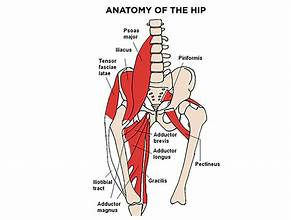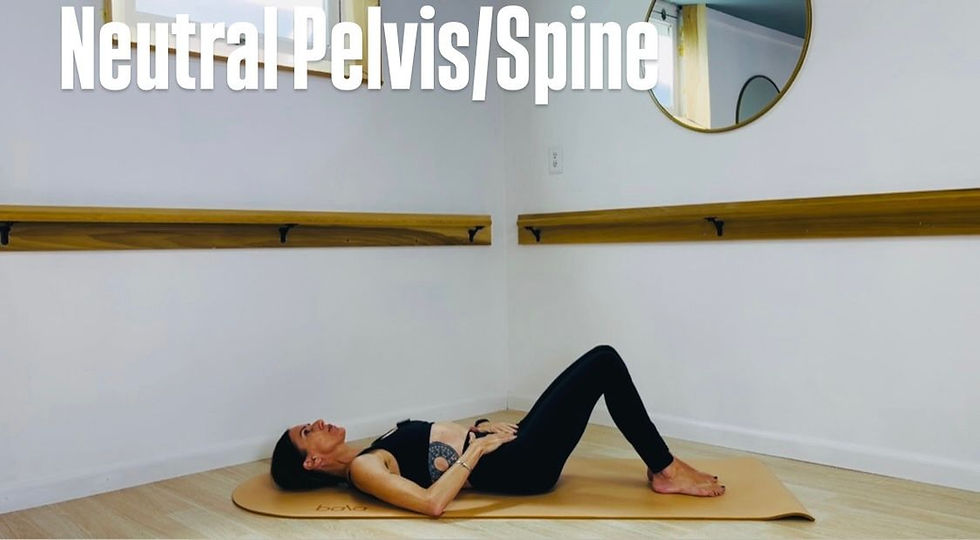Hip Flexor Pain: Causes + Solutions
- thegoodbarre

- Sep 17
- 3 min read
Updated: Sep 17
Are your hip flexors stealing the spotlight during your core and glute workouts? You're not alone! Read on to uncover the reasons behind their dramatic flair and how you can help them share the stage.

Recently, I've heard many clients talk about their hip flexors becoming dominant or experiencing pain in that area. Your hip flexors may dominate during glute exercises because of weak or underdeveloped glutes, tight hip flexors, or a weak core that fails to stabilize your pelvis effectively. Prolonged sitting often results in tight hip flexors that have difficulty lengthening, hindering the glutes' proper function, and requiring deliberate effort to address the issue through stretching, strengthening the glutes and core, and enhancing movement patterns.
Common Reasons for Hip Flexor Dominance
The glutes are the main muscles responsible for hip extension, which is essential in many glute exercises. If your glutes lack strength, your hip flexors might compensate by taking on more of the effort, resulting in a sensation of them "taking over".
Prolonged sitting shortens the hip flexor muscles, leading to chronic tightness. Tight hip flexors can inhibit the glutes from fully activating, creating a muscle imbalance where the flexors are overactive and the opposing gluteal muscles are underactive.
A strong core helps to stabilize the spine and pelvis during movement. When the core is weak, the hip flexors may take on more responsibility for maintaining stability, further contributing to tightness and overactivity.
If you're not actively focusing on squeezing your glutes during exercises like glute bridges or squats, your body may default to using more familiar and dominant muscles, such as the hip flexors.
How to Address Hip Flexor Dominance
Stretch and Lengthen:
Regularly perform stretches to increase the flexibility of your hip flexors and improve their range of motion.
Try my favorite hip flexor stretch that you can do anywhere:
Begin in a kneeling position with left knee in front of the right, at 90 degree angle.
Now tilt your pelvis posteriorly (Tuck your tailbone, water spills out the back side of your bowl).
Lean slightly forward until you feel a stretch in your right hip flexor (psoas).
Hold the stretch for 30 seconds and then repeat on the other side.
Do 2-3 reps on each side.
* Do not arch your back when you do this. Keep your pelvis tilted posteriorly, tailbone stays tucked.
Strengthen Glutes and Core:
Incorporate exercises like glute bridges, clamshells, and planks to build strength in your glutes and core muscles, which will help to stabilize the pelvis and allow the glutes to work more effectively.
Focus on Mind-Muscle Connection:
During workouts, consciously focus on engaging your glutes and feel them working, rather than just going through the motions.
Improve Daily Habits:
Minimize prolonged sitting and get up to move around throughout the day to help keep your hip flexors from tightening up.
Decreasing your hip's range of motion isn't a direct treatment for hip flexor pain; in fact, limited range of motion often causes hip flexor pain, especially when caused by tightness from prolonged sitting. Instead of decreasing motion, you should focus on improving and restoring your hip's full, healthy range of motion through targeted stretching and strengthening exercises, alongside other treatments like activity modification, rest, and ice to heal the underlying cause of the pain.
Why Decreasing Range of Motion Isn't the Goal
Tightness causes pain:
Tight hip flexors restrict proper pelvic rotation and movement, contributing to pain in the front of the hip.
Misalignment:
Limited hip mobility can lead to an anterior pelvic tilt (a forward tilting of the pelvis), which creates poor posture and can cause pain.
Addressing the root cause of the issue is crucial, rather than enduring pain or making constant adjustments. If you experience severe or ongoing hip pain, seek advice from a doctor or physical therapist for an accurate diagnosis and treatment plan. They can identify whether your pain is due to tightness, weakness, or another underlying problem.


